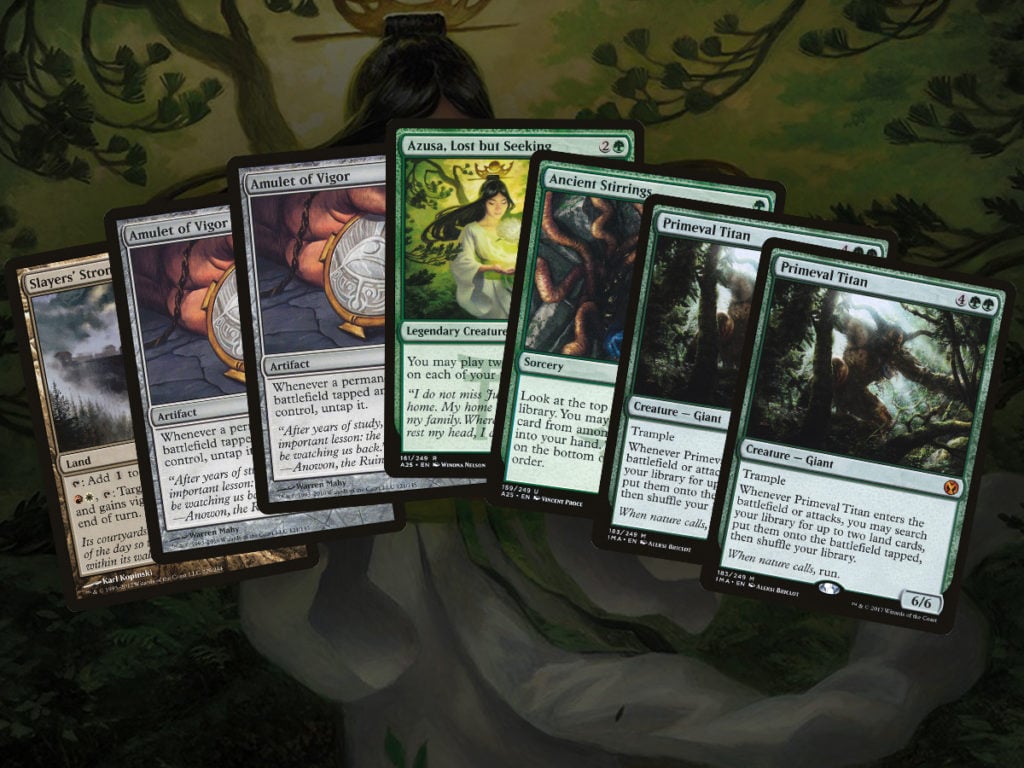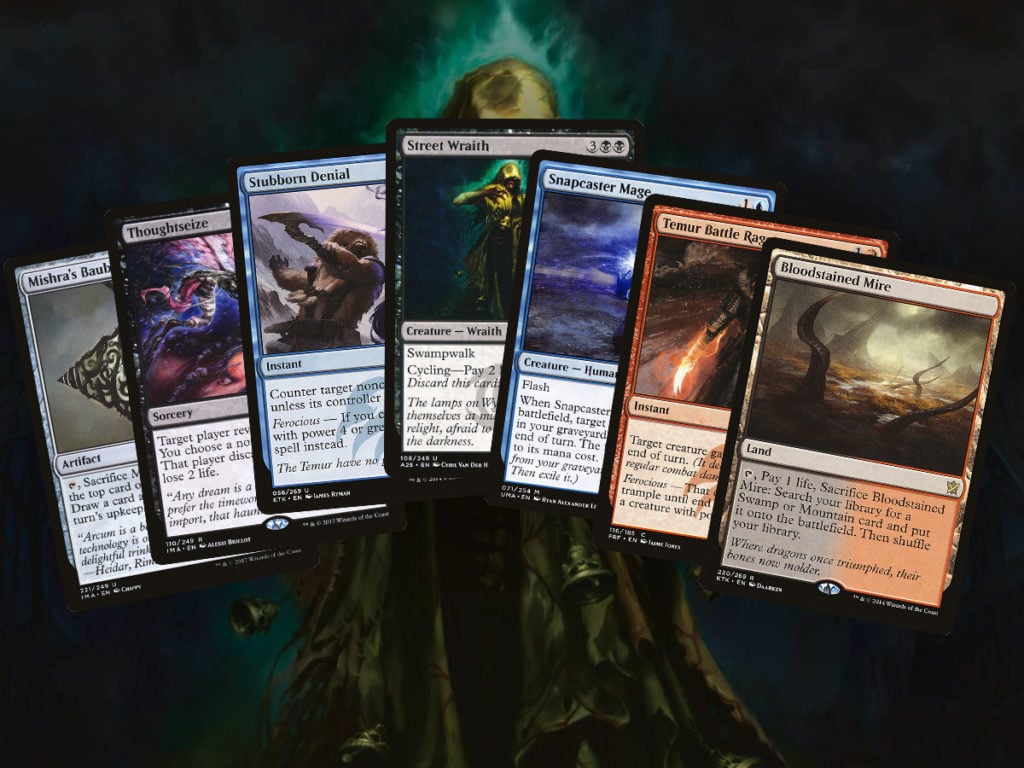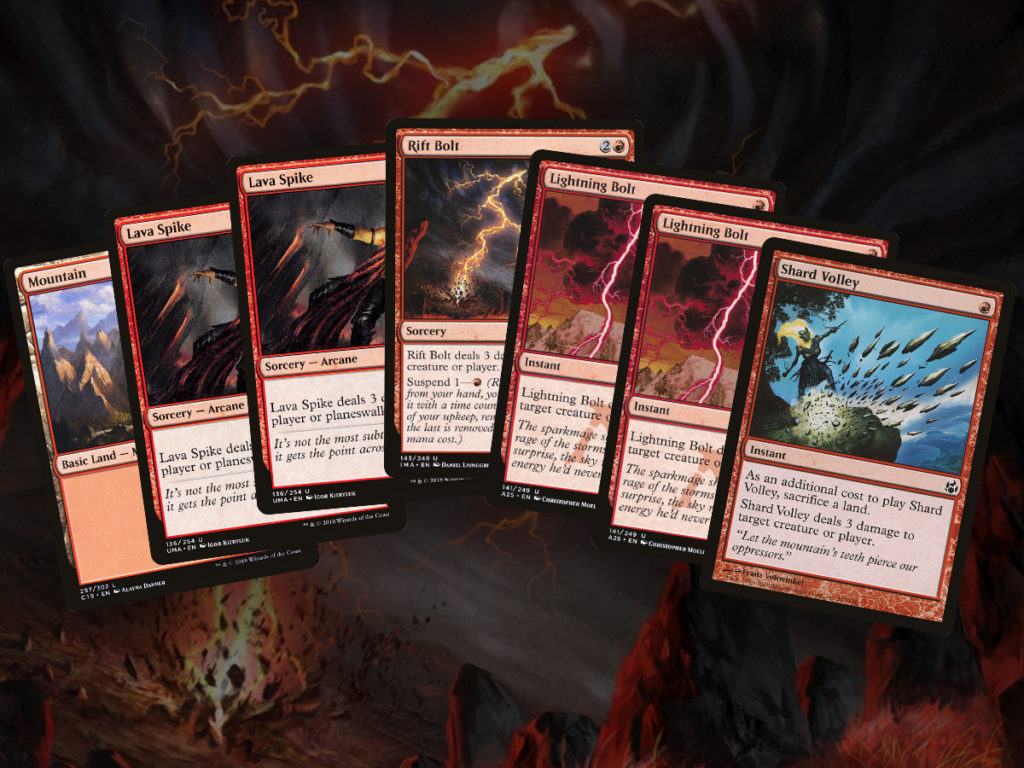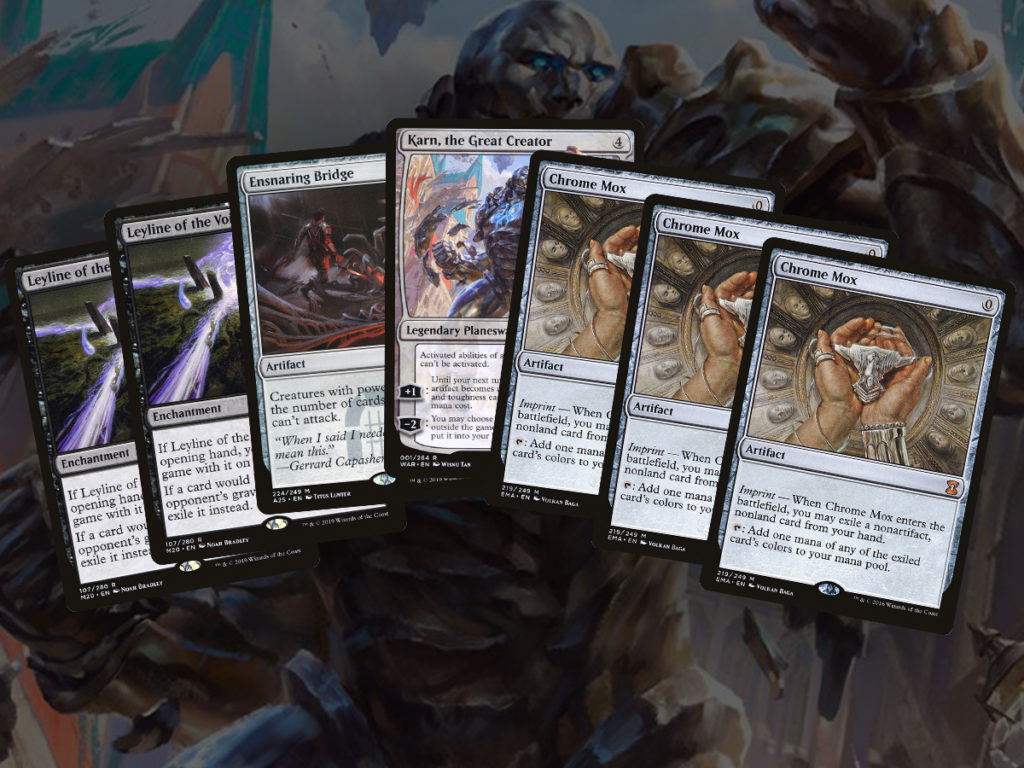Deciding when to mulligan is one of the hardest skills to develop in Magic. I, like everyone else, have found myself scratching my head and wondering if I have a functional hand whenever I look at seven cards. I have found the single biggest factor in determining if a starting hand is keepable or if I should mulligan is not solely card quantity or card power, but if the hand has a cohesive plan.
A History Lesson
The mulligan rule has changed a number of times over Magic’s history. The two most recent and well-known rules are the Vancouver Mulligan which was in effect from 2015-2019, and the London Mulligan which was introduced in 2019.
The Vancouver Mulligan rule allowed you to scry one after you mulliganed and you’ve kept your opening hand. This seems subtle, but even that small change introduced another decision to every game where a player takes a mulligan.
The Vancouver Mulligan was recently replaced by the London Mulligan Rule, which allows you to look at seven cards each time you mulligan. Once you decide to keep your hand, you put X cards on the bottom of your library, where X is the number of times you’ve mulliganed.
This new dynamic changes the way players should look at their opening hand: when you have the chance to improve the quality of your opening hand, you should be more willing to mulligan, especially if your original seven doesn’t have a clear plan. This is not without cost, though, as this new rule introduces many new and important decision points to the beginning of games.
Unlike the Vancouver Mulligan rule, the London Mulligan lets you craft your plan before you start the game instead of accepting a hand and making a decision based on the top card of the library. If you have cards that are situational, expensive, or redundant, you can choose the set of cards from the top seven that create the most functional hand.
Aren’t Mulligans Bad?
Don’t get me wrong here: taking a mulligan means that you have one fewer card than your opponent, and cards are arguably the most important resource in the game. However, once you change your mindset from “I have to mulligan” to “I get to mulligan,” you’ll be grateful for the opportunity to send a mediocre hand back.
If your average seven-card hand is 50% to win the game, a bad seven-card hand might be 30% to win. If an average six-card hand is only 40% to win the game, that is still an improvement from a bad seven. Even though you are down a resource, you have gained 10% equity over the seven card hand with more resources.
In fact, the London Mulligan makes me more likely to mulligan borderline hands because the average quality of hands following it is relatively high.
When To Keep A Hand
When you’re assessing your opening hand, the most important question to ask yourself is, “What does this hand do?” If the hand doesn’t have a strong plan, then it is likely best to mulligan.
Here’s a real-life example from Modern Amulet Titan:

At first glance, this hand looks like a clear mulligan. It’s lacking a colored source and has two Primeval Titans with a single land. However, if you draw any green source, Ancient Stirrings can find a bounce land to go with Azusa, which will really make this hand work. On the draw, we’ll draw a green source by turn two about 51% of the time.
The two Amulets and Titans also make the power level of this hand extraordinarily high. If you find a green bounce land within two draw steps, you can attack an opponent for 24 damage if they don’t have proper interaction. Even if your opponent has a way to kill Azusa, you can still attack for eight with the first Titan and set up the second one the following turn.
Most people would mulligan this hand, but it has a game plan, and a good one at that!
When to Mulligan
So, now you know when to keep a hand…but when should you mulligan? Once again, it’s best to ask yourself whether your hand has a cohesive game plan. “Lands and spells” is a common phrase that you hear people say while taking a mulligan; it’s also largely a trap. The “lands and spells” mentality is a shortcut people take to keep a hand without thinking critically.
To illustrate this point, let’s take a look at a “lands and spells” hand from Modern Death’s Shadow:

While this hand may look like a fine keep, I believe it to be a mulligan. This hand may have a Stubborn Denial, but it doesn’t have a Death’s Shadow or Gurmag Angler to turn on the ferocious clause. You’ll also need to draw one of your big finishers to make the Temur Battle Rage in this hand worthwhile. You won’t want to cast Snapcaster Mage until you have three or four mana, so this hand is quite far away from being able to utilize it correctly.
This hand may contain lands and spells, but it’s missing many of the key components Death’s Shadow needs to execute its game plan. Drawing a Death’s Shadow would be great, but you’ll also need more ways to reduce your life total. Gurmag Angler could also help, but you’ll have a hard time casting it without a card like Thought Scour or additional fetchlands. This hand needs more lands and more specific spells to work, so it’s just too risky to keep.
You may also choose to mulligan a hand based on how much your spells cost. When the spells in your hand are expensive and you’re short on lands, that’s usually an easy mulligan. But what about if your spells are cheap and you’re short on lands?

Unlike the Amulet hand, this looks like something you should definitely keep. Six burn spells is likely good enough to finish the job against just about every Modern deck. What more could you want?
The answer is lands. If you don’t draw your second land by turn two, you won’t be able to deploy all your spells until you’re too far behind. Unlike the Amulet hand we looked at earlier, this isn’t powerful enough to support missing the required land for an extra turn.
Crafting a Plan After a Mulligan
As we’ve learned, having a strong plan is the most important factor in deciding when to mulligan. But the London Mulligan has also introduced a new decision point: which cards do you put on the bottom of your library once you’ve mulliganed? The new mulligan rule may grant players greater flexibility, but you can easily turn your good six into a bad six by bottoming the wrong card.
This hand out of a Mono-Red Prison Legacy deck illustrates that quite well. Let’s say you’re on the draw against Dredge in a post-sideboard game, and you have the following hand:

Many players’ first instinct would be to put back one of the two Leylines of the Void or one of the three Chrome Mox. However, if you bottom a Leyline, your other one may be vulnerable to the enchantment removal that Dredge will have brought in. Having three copies of Chrome Mox may also be useful: they let you turn all the colored spells you draw into mana sources, and you’ll need to race to lock your opponent out before they can deal with both of the Leylines.
I believe that Ensnaring Bridge is the card to bottom from this hand. You already have Karn, the Great Creator, which can find an Ensnaring Bridge when you need it (or any other artifact, such as Tormod’s Crypt). If your plan is to cast Karn, putting back a Chrome Mox will make this hand substantially worse.
Hopefully you now have a better idea of how to mulligan, and how to craft a game plan based on your opening hand. Improving your decision-making skills is one of the best ways to level up your game, and I hope I’ve provided some valuable insight on how to accomplish that.

Michael Rapp is a Modern specialist who favors Thoughtseize decks. Magic sates his desire for competition and constant improvement.

